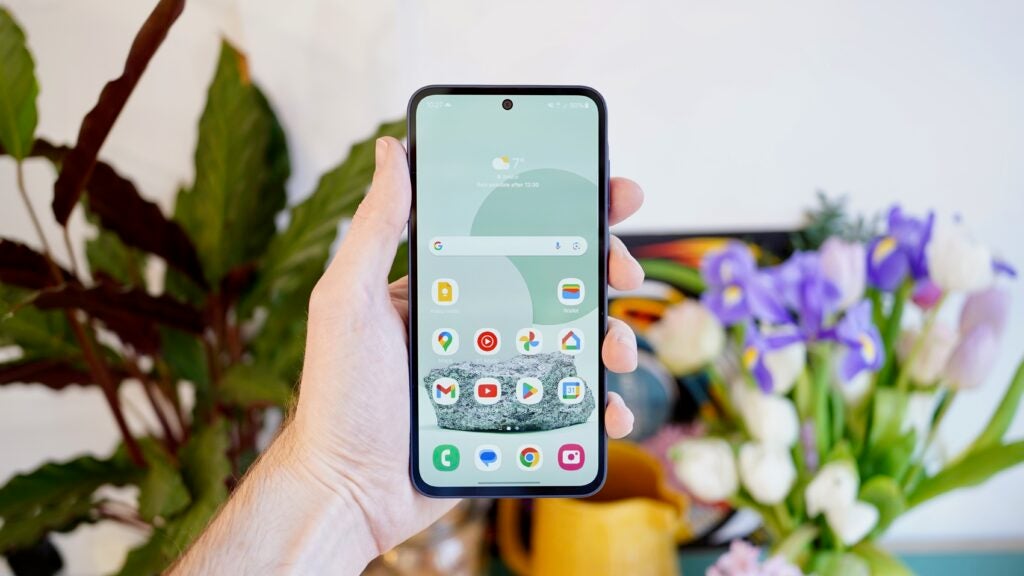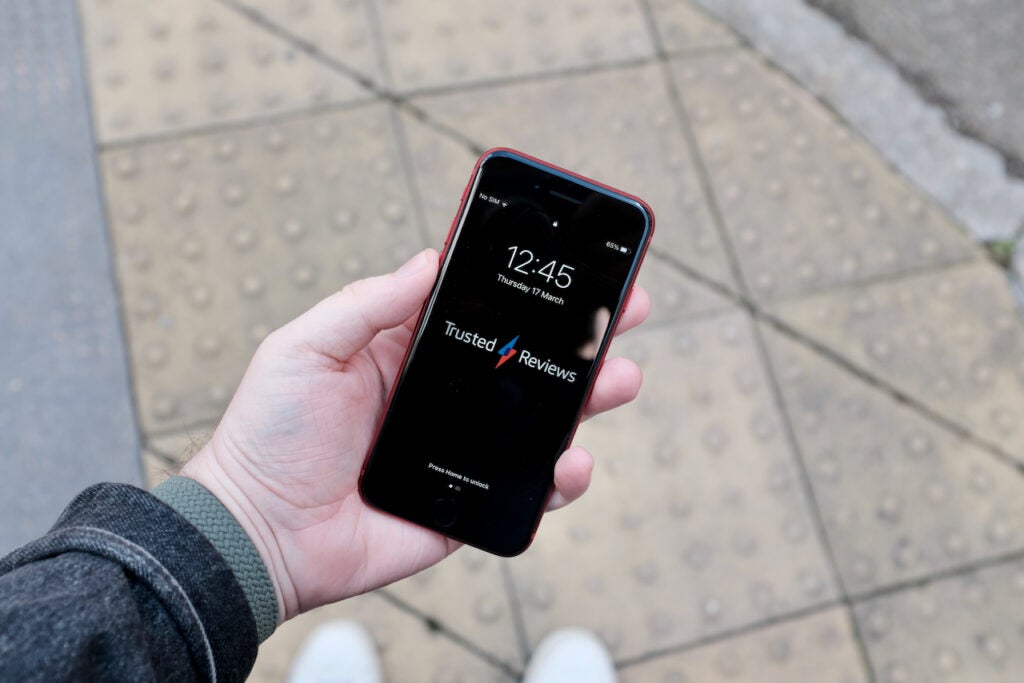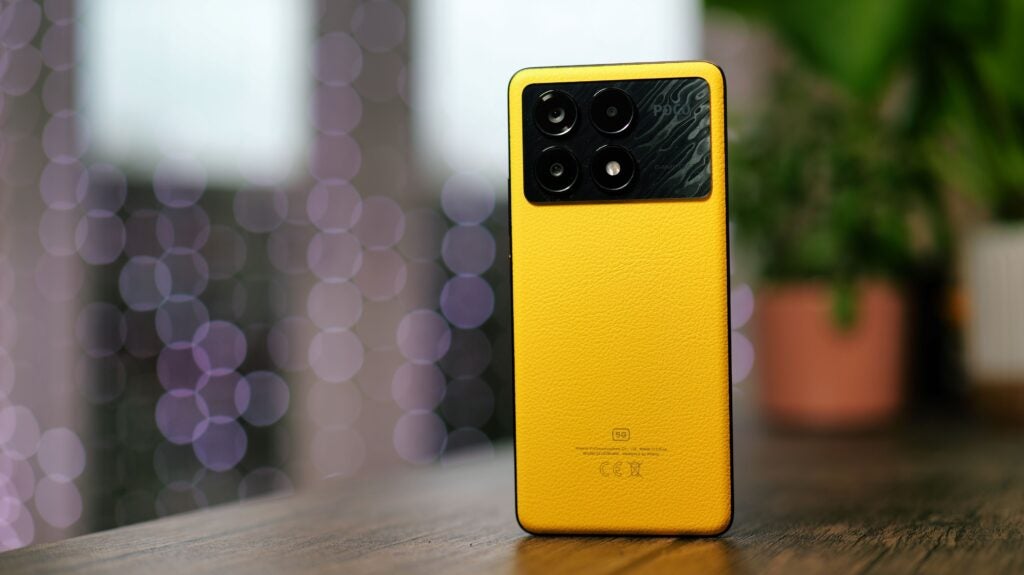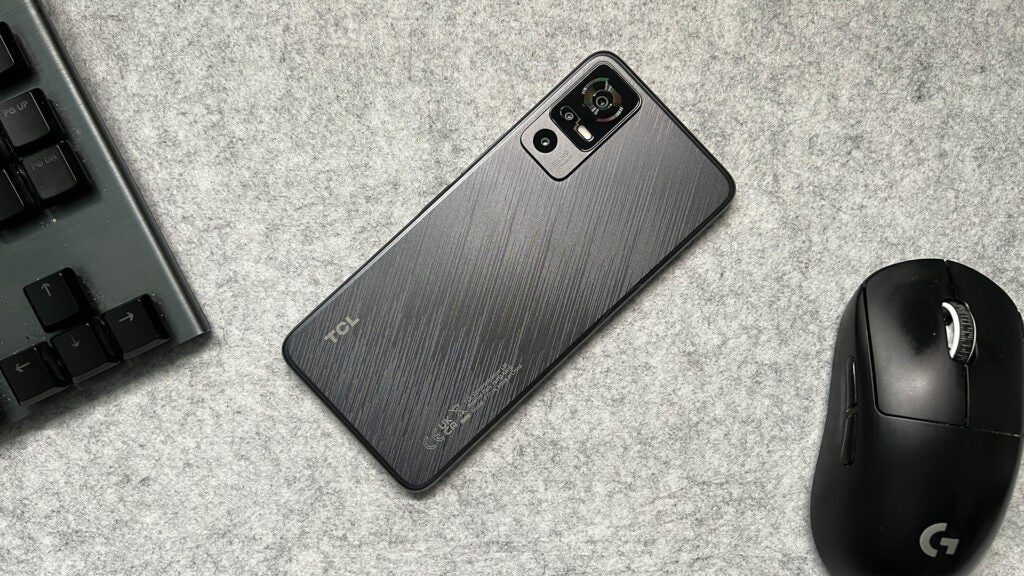
Flagship smartphones offer impressive tech in a small package, but they come at a premium. What if your budget doesn’t stretch that far? Well, you’re in luck. We’ve got a hand-picked selection of the best affordable phones that don’t break the bank right here.
10 years ago, a top-end smartphone may have only cost around £500/$500, but the world has changed significantly since then, and now you may well be charged double that if you go for a top-spec model.
However, while the flagship market has become more expensive, the budget end of the market has also come a very long way. Features considered exclusively high-end just a couple of years ago, like 120Hz refresh rates, fast charging and pixel-packed screens have now made their way to the sub-$400/£400 section of the market, making affordable phones more tempting than ever.
Nowadays, if you know where to look, you can get greatly improved photography, robust construction quality, wireless charging, and highly reliable performance from phones at this price. Of course, there are still plenty of devices that may let you down with sub-par battery life and bloated software, but none of those have made it to our prestigious list.
All of the below devices have been tested by one of our reviewers for at least a week but often longer to reliably gauge their performance in key areas, including camera performance, build quality and battery life, so you know that you can count on our buying advice.
Our definition of “affordable” means any handset retailing for less than £400/$400, but if we do happen to go over this amount, we’ll make our reasoning clear as to why we’ve made an exception.
We also have other best lists for those after something a little more specific. Our best camera phone round-up focuses on a device’s photographic and videography skills, while our best mid-range phone list focuses on slightly pricier devices.
Best cheap phones at a glance
How we test
Every phone we review goes through a series of uniform checks designed to gauge key things including build quality, screen accuracy, battery life, performance and camera prowess.
These include formal synthetic benchmarks and scripted tests, plus a series of real-world checks, such as how much battery it loses per hour streaming video.
We also make sure to use every phone we review as our primary handset for at least 4 days to ensure our review is as accurate as possible. You can see a more detailed breakdown of our testing methodology in our how we test phones guide.

Motorola Edge 50 Fusion
Best budget phone
Pros
- Sleek, stylish design
- Strong 144Hz display
- Snappy main camera
Cons
- Some bloatware
- No HDR10 support
The Motorola Edge 50 Fusion is not only an impressive all-rounder at a very tempting price of just £349, but it’s also one of the more compact budget options around in 2024.
It measures in at just 7.9mm thick and 175g, which makes it a delight to hold and use, and that’s further improved by IP68 dust and water resistance, and the option of either vegan leather or frosted plastic depending on the colour you go for. There isn’t the Pantone colour certification we saw with last year’s Edge 40 Neo, but that was really just a nice-to-have.
The 6.7-inch screen, up from 6.5 inches on the 40 Neo, isn’t to be sniffed at either. It sports a curved OLED panel delivering vibrant colours and deep blacks with great contrast. It can also reach a rapid 144Hz, beating the 120Hz panels of others in our list, allowing for a buttery-smooth experience that’s also well suited to gaming.
That’s backed up by a surprisingly capable camera system comprised of an OIS-enabled 50MP main snapper and a 13MP ultrawide on the rear, along with a 32MP selfie camera. The main sensor, in particular, is capable in well-lit and low-light environments, especially when compared to the Samsung Galaxy A35 5G and Poco X6 Pro, with auto-enhance AI helping to boost the colour and detail from the auxiliary lenses.
Performance is also surprisingly good considering its budget price tag, with the Snapdragon 7s Gen 2 and a healthy 12GB of RAM able to compete with mid-range phones that cost £200 more. It’s still not powerful enough for high-end AAA gaming, and won’t be able to compete with the likes of the Poco X6 Pro, but for all but dedicated mobile gamers, it should more than suffice.
And, despite its more compact dimensions than rivals, it still packs in a large 5000mAh battery that doesn’t struggle to last a full day without needing a top-up, though it can’t quite make it through a second day. The good news is that 68W fast charge tech can provide a full charge in just 47 minutes, among the fastest you’ll find at the budget end of the market.
Reviewer: Jon Mundy
Full review: Motorola Edge 50 Fusion

Nothing Phone (2a)
Best budget camera
Pros
- Design and UI both stylish and solid
- Smooth performance
- Strong battery life
Cons
- Nothing OS 2.5 UI embellishments could run deeper
- No wireless charging
- Glyph system significantly stripped back
The Nothing Phone (2a) is the first truly budget-focused phone from the UK startup, and despite its tempting £319 price tag, the Phone (2a) not only retains the iconic Nothing design DNA but plenty of tech from the full-fat Nothing Phone (2).
If you’re looking for a unique-looking phone on a budget, the Nothing Phone (2a) fits the bill and then some with its iconic transparent design, giving you a good look at the internals on the rear panel. Like the others in the collection, it also sports the Glyph interface that’ll flash in time to ringtones and texts, and it’ll also double up as a handy camera timer. It’s not quite as advanced as usual, with only three LEDs compared to the usual 11, but it still works in the same way.
Still, it’s the tech that’s the most important aspect of the Phone (2a), and Nothing has excelled once again. The 6.7-inch 120Hz AMOLED screen is bright and accurate with a 1300nit peak brightness when watching HDR10+ content, along with a proper in-display fingerprint reader that works well.
That’s flanked by a dual 50MP camera setup comprised of a wide and ultrawide. Although the sensors powering the experience aren’t identical to those on the Phone (2), they do a great job capturing photos in both well-lit and low-light scenarios, even if the latter suffers from a little too much artificial brightness at times.
That’s backed up by the MediaTek Dimensity 7200 Pro which allows it to compete with the year-old Motorola Edge 40 Neo, and a 5000mAh battery delivers all-day battery life. There’s also the dot-matrix-inspired Nothing OS 2.5 to appreciate, offering one of the most stylised approaches to Android 14 around.
There’s also the Nothing Phone (2a) Plus to consider, which is a little more expensive at £399 but boasts a faster Dimensity 73500 Pro chipset and reflective components within its transparent rear casing.
Reviewer: Jon Mundy
Full review: Nothing Phone (2a)

Samsung Galaxy A35 5G
Best build quality
Pros
- Solid build quality
- Decent main camera
- Strong battery life
Cons
- Screen not the brightest
- Secondary cameras not great
- Design rather bulky
If you’re looking for a solid all-rounder that’ll just keep on going, Samsung’s Galaxy A35 5G is a tempting option. Our reviewer found that, even on busy days with nearly 8 hours of screen-on time, the phone still had enough juice to last ’till bedtime and, on less busy days, it could easily make it to the end of a second day.
Of course, battery longevity isn’t the only reason to opt for the Galaxy A35 5G over other options in our list. The Galaxy A35 5G has design staples rarely seen at the price point including an aluminium frame, glass rear, IP67 dust and water resistance and even Gorilla Glass Victus+ protection for the 6.6-inch display that helps it look and feel even more like a Galaxy S24 at a cheaper price.
That 6.6-inch 120Hz AMOLED display is a highlight of the affordable phone. It might match last year’s panel, but the AMOLED nature means that blacks are deep and colours are particularly vibrant, and at 1000nits peak brightness, it’s easy enough to use outdoors.
If there’s one area where the Galaxy A35 5G’s budget nature truly shines through, it’s in the chipset department. Using the same Exynos 1380 chipset as last year’s Galaxy A54 5G isn’t necessarily a bad thing, offering a boost in performance compared to last year’s A34 5G, but there are options like the Poco X6 Pro that’ll deliver faster everyday performance, and at a similar price too.
Still, if you want a cheap phone that’ll keep on going, the Samsung Galaxy A35 5G remains a tempting choice.
Reviewer: Jon Mundy
Full review: Samsung Galaxy A35 5G

Honor Magic 6 Lite
Best build quality
Pros
- Loverly premium design
- Brilliant display with 1920Hz PWM dimming
- Long battery life
Cons
- Slower charging than the Magic 5 Lite
- Video stabilisation is awful
- Ships with Android 13, rather than 14
If you’re looking for a reasonably priced smartphone that’s packed full of features, has a sleek design and is robust enough to survive a few drops and spills, then the Magic 6 Lite is the perfect smartphone for you.
The Magic 6 Lite looks much more high-end than its price reflects. Thanks to its curved sides, polished finish and minimal camera bump, you’ll barely notice the phone in your pocket, which is quite a change from chunkier smartphones on the market.
The Magic 6 Lite has features an IP53 rating for dust and water resistance, which wasn’t found on its predecessor. Although this doesn’t mean the phone is totally waterproof, it’s robust enough that the odd spill or rain shower shouldn’t cause any problems with the handset.
The Magic 6 Lite runs on Snapdragon 6 Gen 1, which isn’t the most recent version of Qualcomm’s chipsets, but it’s still a decent platform and is an upgrade from its predecessor. In our review, we concluded that you’d be hard-pressed to tell the difference between the Magic 6 Lite and a higher-end flagship model, as apps always opened quickly, animations were smooth and multitasking was seamless.
The handset also comes with 256GB of storage and 8GB of RAM, which is still pretty rare for a smartphone of this price range.
Housing a mammoth 5300mAh battery, it’s unsurprising that Honor states it can provide over two days on a single charge, which our reviewer found to be the case. In our benchmark tests, we found 60-minutes of Netflix drained the Magic 6 Lite’s battery by just 4%, compared to similar phones, like the Motorola Edge 40 Neo, where a higher 11% battery discharge was seen.
The Magic 6 Lite also allows for up to 35W fast charging, and although this isn’t the fastest, our benchmark tests found that 15-minute charge topped the battery by 18%. Of course, there’s faster charging on higher-end smartphones, but this still beats the likes of the Google Pixel 7a.
Reviewer: Luke Baker
Full review: Honor Magic 6 Lite

iPhone SE 2022
Best for Apple fans on a budget
Pros
- The fastest phone at this price (by some distance)
- Takes great daylight pictures
- IP rating and wireless charging
- iOS and all the benefits that come with it
Cons
- Small screen is cramped and restrictive
- Tired design
- No night mode in the camera
We are bending our rules slightly to include a phone that breaks our price limit, but if you’re deadset on getting yourself a new iPhone, then this is your cheapest option – and it’s still a belter.
You may have to forgive the depressingly dated design and its associated small screen which measures just 4.7 inches, but if you can get over that then the iPhone SE 2022 does in fact still offer a lot of positives for the price.
First and foremost, it runs on the brilliant A15 Bionic chip, which is one of the very best in the business; it’s actually the very same one that you’ll find on the iPhone 13 Pro, so you won’t be wanting for power. Even better, this phone will be in line for Apple’s unparalleled long-term software support, so we wouldn’t even be surprised to see it getting the latest updates seven years from now.
On top of that, the newest iPhone SE has one of the best cameras that you’ll find for the price, and it particularly delivers on richly detailed images, so that difficult textures like dog fur or woolly jumpers look especially good. That said, it does miss out on a dedicated Night Mode, which is a real shame, so if you’re planning to take a lot of pictures when the sun is down then this might not be the best phone for you. The selfie camera also could do with some work, with it not being to the same standard as the main snapper.
If you’re looking for an iPhone that gives a good camera and strong performance for a cheaper entry price then this is a good bet, but do bear in mind that the screen is small and underwhelming.
Reviewer: Max Parker
Full review: iPhone SE 2022

Poco X6 Pro
Best budget gaming phone
Pros
- Powerful MediaTek processor
- Bright 120Hz OLED display
- Great main and selfie cameras
Cons
- Bloatware
- Advertisements in some system apps
- Weak ultrawide and macro cameras
The Poco X6 Pro delivers a true flagship smartphone experience at a fraction of the usual flagship cost.
Thanks to its adaptable refresh rate of between 60-120Hz and its 480Hz touch sampling rate, the Poco X6 Pro is an ideal smartphone for gaming. In fact, the touch sampling rate can even be boosted to an impressive 2160HZ, using the phone’s built-in Game Turbo mode.
Despite its £369 RRP, the Poco X6 Pro is powered by the mighty MediaTek Dimensity 8300-Ultra chip, which is a premium processor. Although not the highest-end chip offered by MediaTek, the 8300-Ultra still allows for powerful performance and, when compared to similarly priced rivals, the X6 Pro’s performance is a clear winner.
The X6 Pro is also one of the first phones that have shipped with Xiaomi’s new operating system, but if you’ve recently used a Xiaomi or Poco device then you shouldn’t expect too much of a change.
The X6 Pro not only offers solid battery life from its 5000mAh cell, but it’s also fast-charge capable, up to an impressive 67W. Our benchmark tests showed that a 30-minute quick charge can get you up to 78%, which is ideal for a quick top-up in between gaming sessions.
Reviewer: Luke Baker
Full review: Poco X6 Pro

TCL 40R 5G
Best entry-level phone
Pros
- An eye-catching design
- All-day battery life
- Just about powerful enough to game on
Cons
- 720p resolution
- 2MP macro lens isn’t great
- Plenty of pre-installed bloatware
What if you want a decent entry-level phone for less than £200 that simply does the job? The TCL 40R 5G fits the bill.
The budget-focused device offers all the main staples of a solid budget smartphone experience with 5G connectivity, a good-looking design, long battery life from a 5,000mAh cell and decent (though not quite snappy) everyday performance.
There’s a large 6.6-inch LCD display with a 90Hz refresh rate great for scrolling and binging, though its sub-1080p resolution can make elements look a little soft. The main 50MP rear camera is capable of delivering surprisingly sharp images for the price, at least.
It might not be able to compete with more premium options on the market, but for the £199 price tag, you won’t find much better in 2024.
Reviewer: Lloyd Coombes
Full review: TCL 40R 5G

Nothing CMF Phone 1
Best modular phone
Pros
- Attractive, fun design
- Very accessible price point
- Big, bright and vibrant display
Cons
- Second camera is only for depth sensing
- IP52 rating means little moisture protection
- Slow charging
The Nothing CMF Phone 1 isn’t just affordable, it’s also customisable thanks to its modular design, making it stand out from the vast majority of budget handsets on the market.
The CMF Phone 1 has a removable back casing, allowing you to switch out the colour of the device at a whim or repair a damaged rear for as little as £30. There’s also the Accessory Point in the bottom corner, where you can attach lanyards, kickstands and even a magnetic card wallet.
The 6.67-inch AMOLED display has a 120Hz refresh rate and 2000 nits of peak brightness. We did notice the occasional stutter and the refresh rate isn’t able to drop down to reserve battery, but the screen is still great for binge-watching content considering its budget price. There’s also an optical fingerprint sensor in the display.
The camera module includes a 50-megapixel main camera and a second depth sensor for blurring in portrait mode. We found the effect generally to be nice, though the sensor did sometimes struggle with edge detection. The main camera, meanwhile, captures sharp, colour-rich shots in daylight with decent 2x digital zoom. We did encounter some issues in HDR and low-light images often came out looking over-sharpened, but for the phone’s price, we remained impressed with its overall performance.
The CMF Phone 1 is powered by the MediaTek Dimensity 7300 with 8GB of RAM that is capable of running just about any mobile game – just not in their extreme or ultra graphics settings. The software, meanwhile, has an immediately recognisable Nothing look to it, with bold, retro iconography and typefaces. There’s also a dedicated ChatGPT widget for chatting to the AI assistant.
When it comes to battery life, the phone can last around two days with light use, though apps like WhatsApp and social media will drain the battery much faster. Charging speeds are limited with 30 minutes of charging offering about 35%, but if you’re someone who charges their phone every night overnight this shouldn’t be a problem.
Reviewer: Cam Bunton
Full Review: Nothing CMF Phone 1
FAQs
Our favourite cheap phone for the camera is the Nothing Phone (2a), though the Motorola Edge 40 Neo isn’t too far behind.
Yes, all of the phones in the above list offer 5G connectivity so you’ll be able to get these data speeds as long as you have network coverage and a compatible SIM card.
Comparison Specifications
UK RRP
USA RRP
EU RRP
CA RRP
AUD RRP
Manufacturer
Screen Size
Storage Capacity
Rear Camera
Front Camera
Video Recording
IP rating
Battery
Wireless charging
Fast Charging
Size (Dimensions)
Weight
ASIN
Operating System
Release Date
First Reviewed Date
Resolution
HDR
Refresh Rate
Ports
Chipset
RAM
Colours
Stated Power
Trusted Reviews test data
Geekbench 5 single core
Geekbench 5 multi core
Geekbench 6 single core
Geekbench 6 multi core
sRGB
Adobe RGB
DCI-P3
Max brightness
1 hour video playback (Netflix, HDR)
30 minute gaming (intensive)
30 minute gaming (light)
1 hour music streaming (online)
1 hour music streaming (offline)
Time from 0-100% charge
Time from 0-50% charge
30-min recharge (included charger)
15-min recharge (included charger)
30-min recharge (no charger included)
15-min recharge (no charger included)
3D Mark – Wild Life
GFXBench – Aztec Ruins
GFXBench – Car Chase






